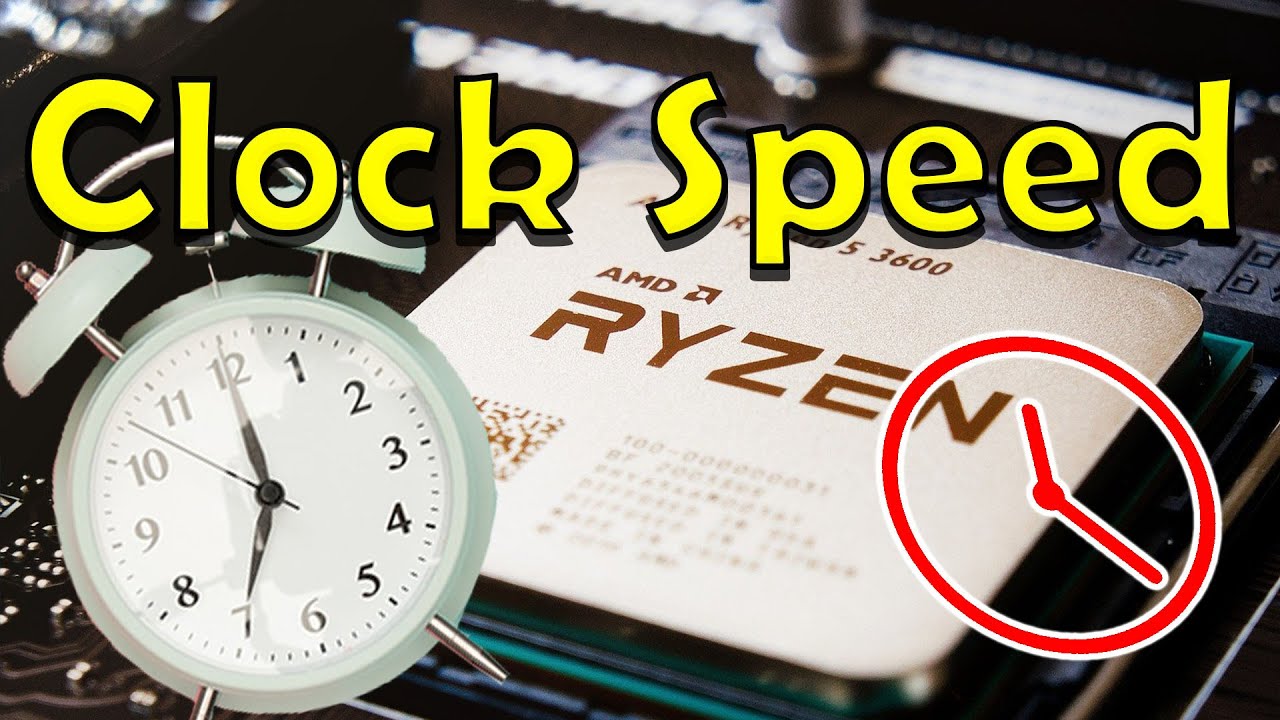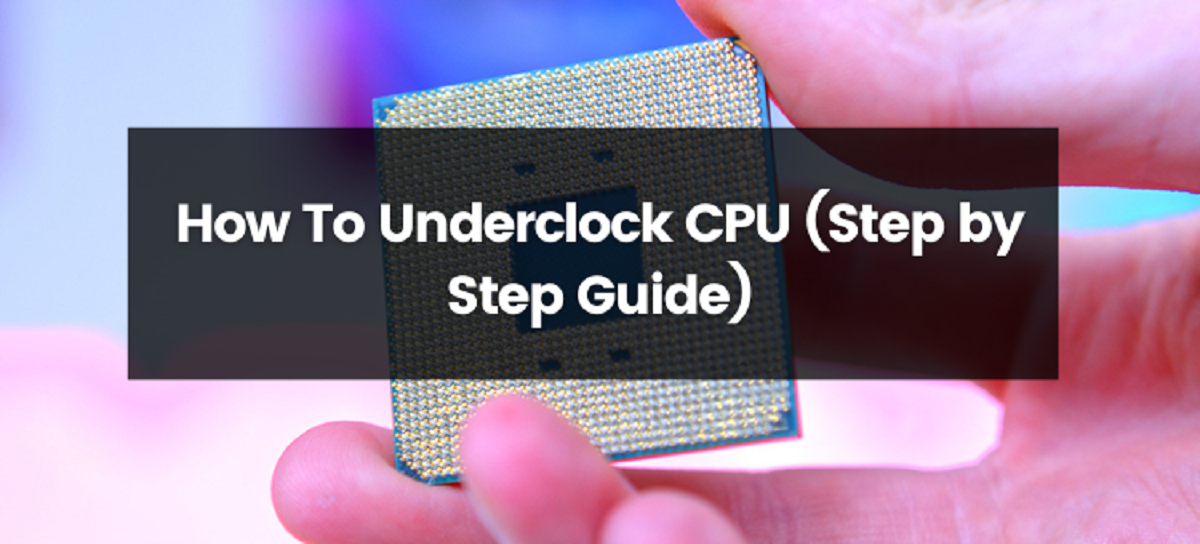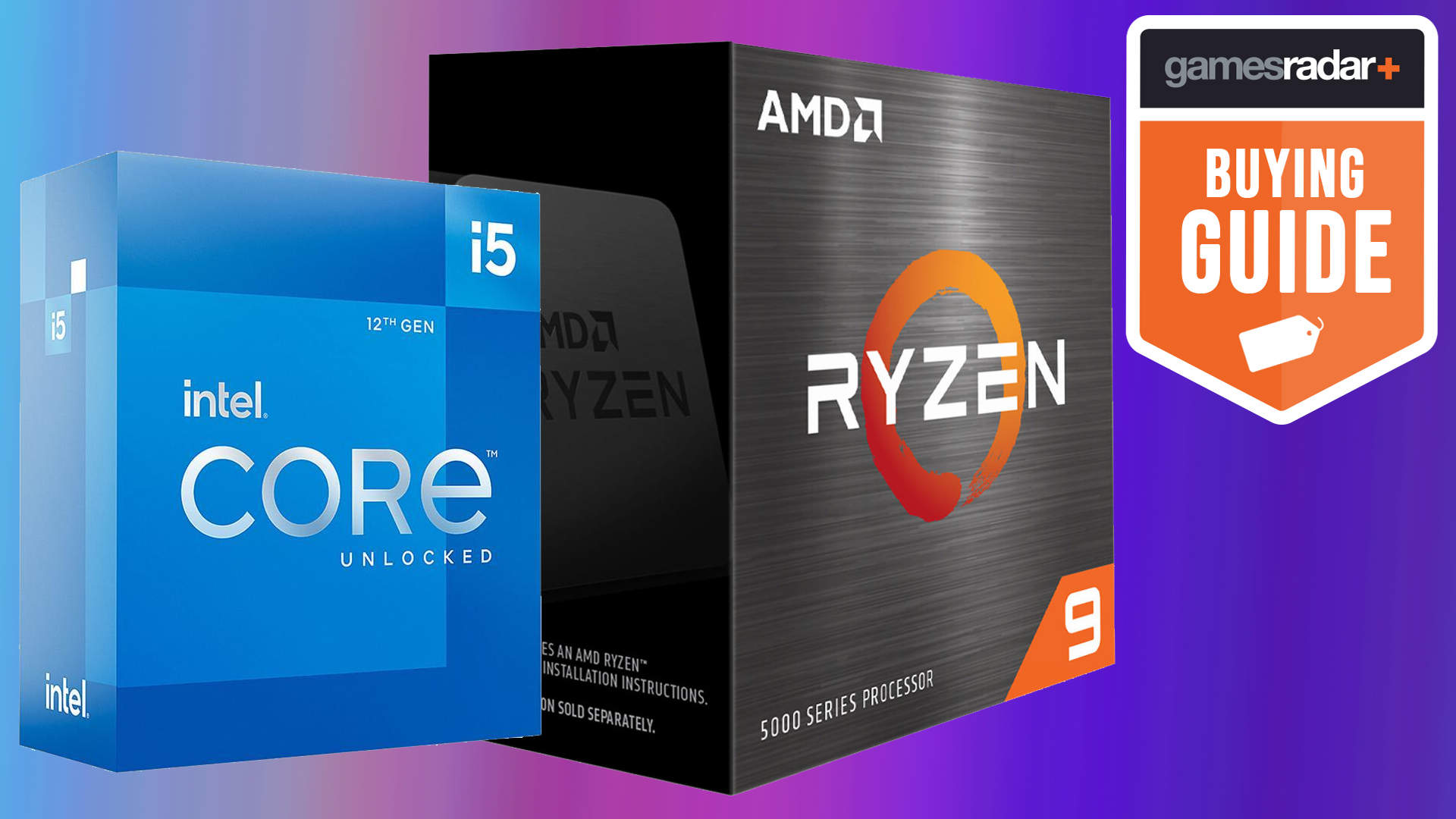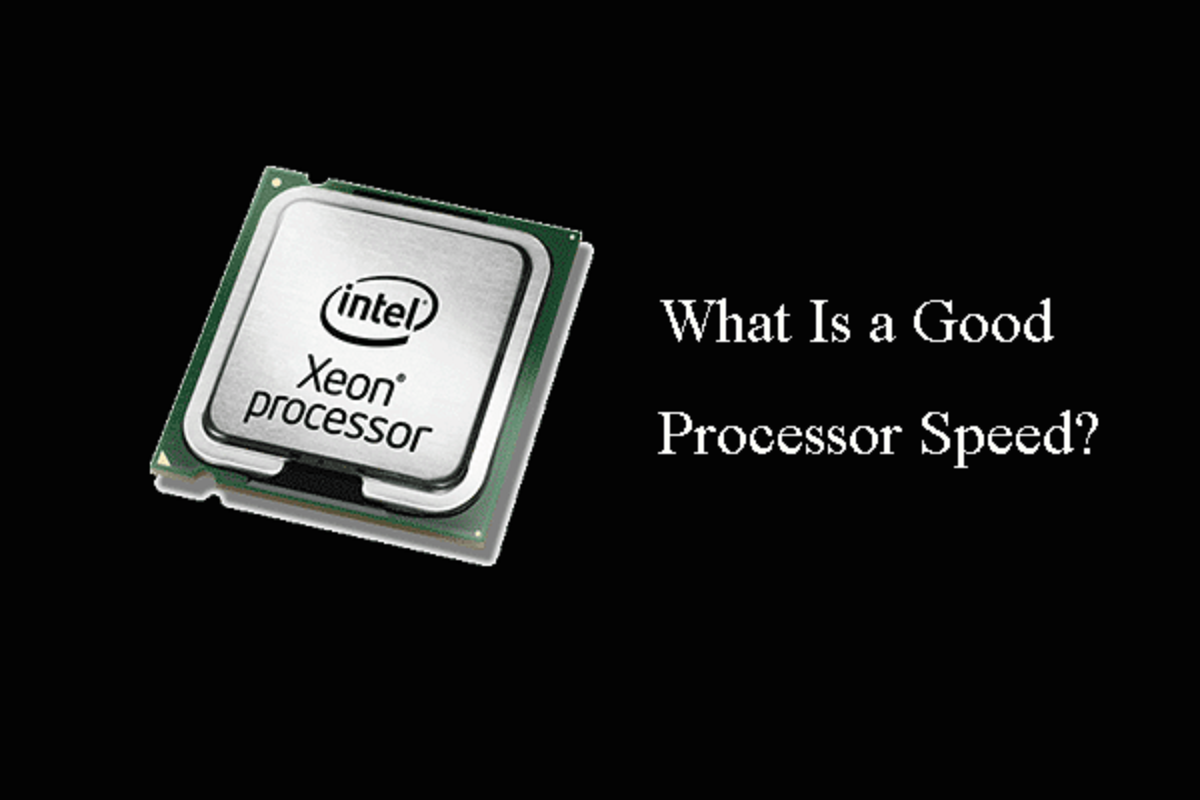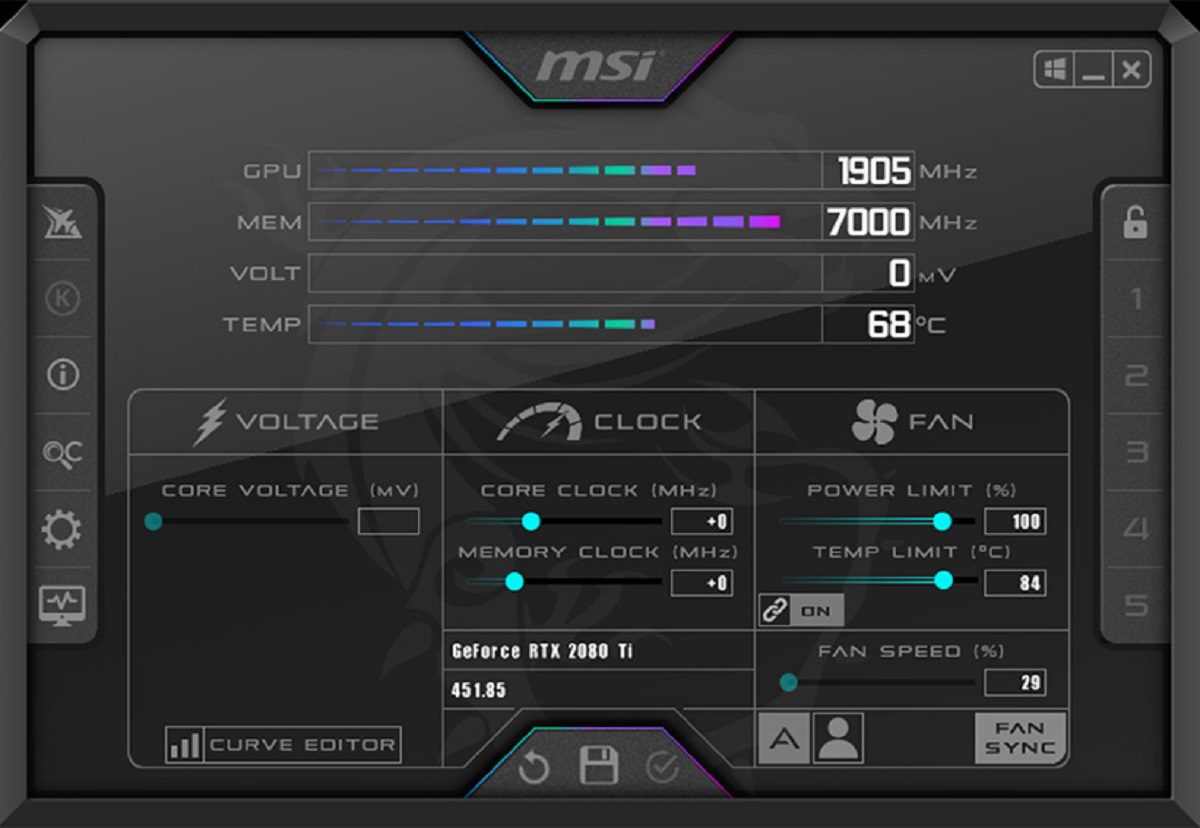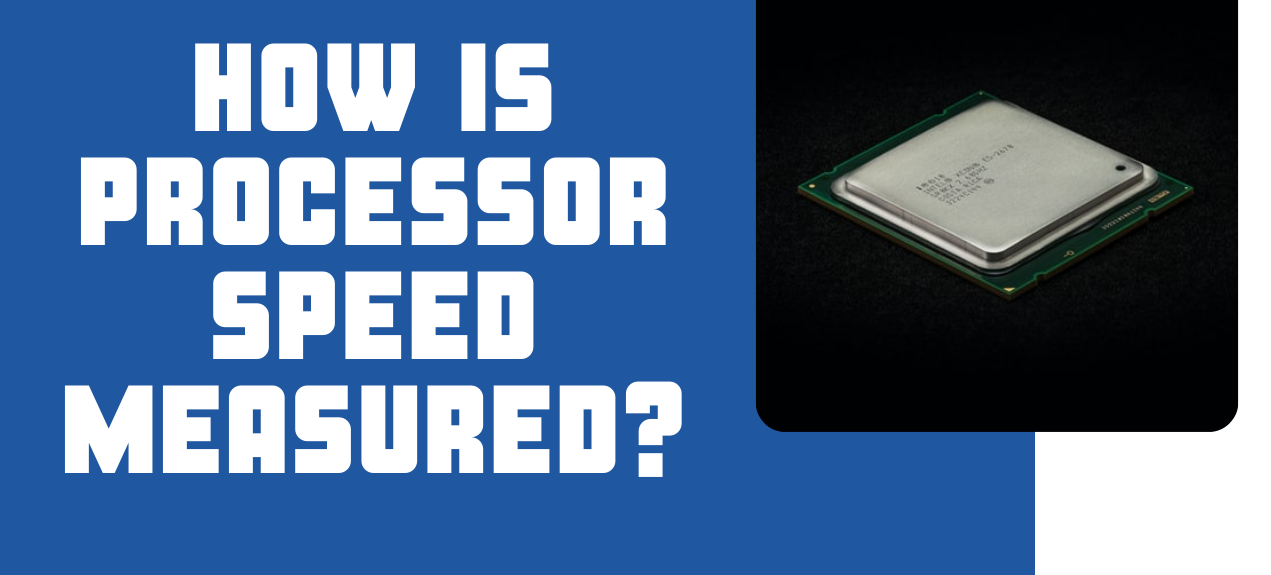Introduction
When it comes to understanding the inner workings of a computer, one term that often comes up is CPU clock speed. The CPU, or Central Processing Unit, is often referred to as the “brain” of a computer, and the clock speed plays a vital role in determining its performance. In simple terms, the CPU clock speed measures how fast a processor can execute instructions and carry out tasks.
The CPU clock speed is usually measured in gigahertz (GHz) and represents the number of cycles that the CPU can execute per second. A higher clock speed means that the CPU can complete more instructions in a given amount of time, resulting in faster processing and overall performance.
However, it’s important to note that CPU clock speed is just one factor that determines a computer’s performance. Other factors like the number of processor cores, cache size, and architecture also play a significant role. Nevertheless, understanding CPU clock speed is essential for anyone looking to purchase a new computer or optimize the performance of their existing system.
In this article, we will delve deeper into the concept of CPU clock speed, exploring how it works, factors that affect it, and its importance in determining overall system performance. We will also touch on the concept of overclocking and underclocking, as well as provide some tips on choosing the right CPU clock speed for your needs.
So let’s dive into the world of CPU clock speed and unravel its mysteries!
What is a CPU Clock Speed?
The CPU clock speed refers to the frequency at which a CPU can execute instructions and carry out tasks. It is measured in gigahertz (GHz), which indicates how many cycles the CPU can complete per second. Essentially, the higher the CPU clock speed, the more instructions the processor can process in a given timeframe, resulting in faster performance.
Think of the CPU clock speed as the heartbeat of your computer. Just as a heart beats at a certain rate to pump blood and keep your body functioning, the CPU clock speed determines how quickly your computer can process data and perform tasks.
Modern CPUs are designed to be highly efficient and can execute multiple instructions in parallel, allowing for faster performance. The clock speed acts as a synchronization mechanism, regulating the flow of instructions and keeping all the different components of the CPU in sync.
It’s important to note that not all CPU cores within a processor operate at the same clock speed. In multi-core processors, each core can have an individual clock speed, depending on the CPU’s design. This allows for better efficiency and resource allocation, as different tasks can be assigned to different cores with varying clock speeds.
While higher CPU clock speeds generally result in improved performance, it’s essential to consider other factors that contribute to overall system performance, such as cache size, processor architecture, and the number of cores. A well-balanced combination of these factors is crucial for optimal performance.
In the next section, we will explore how CPU clock speed works and how it impacts the performance of a computer.
How Does CPU Clock Speed Work?
To understand how CPU clock speed works, it’s important to have a basic understanding of the internal components of a processor. The CPU consists of millions, and in some cases billions, of transistors that work together to perform calculations and execute instructions.
At its core, the CPU clock speed represents the rate at which the transistors within the processor toggle between the on and off states. Each toggle represents a clock cycle, and the clock speed determines how many of these cycles can occur in a second.
During each clock cycle, the CPU fetches instructions from memory, decodes them, and executes them. The faster the clock speed, the more instructions the CPU can process in a given timeframe.
It’s important to note that not all instructions require the same amount of time to complete. Some instructions may take longer to execute due to their complexity or dependencies on other instructions. However, the CPU clock speed gives an overall measure of how quickly the processor can handle instructions.
In addition to the CPU clock speed, there are other factors that influence the performance of the CPU. These include the number of cores, cache size, and processor architecture. Multi-core processors, for example, can handle multiple instructions simultaneously by distributing the workload across different cores.
Over time, CPU clock speeds have increased significantly due to advancements in technology and manufacturing processes. However, there are physical limitations to how fast a CPU can operate. Factors such as power consumption, heat generation, and performance optimizations need to be balanced to ensure stable operation and longevity of the processor.
It’s worth mentioning that not all software applications can take full advantage of high CPU clock speeds. Some programs may be more limited by other factors such as memory speed, input/output speed, or the efficiency of their algorithms. Therefore, it’s important to consider the overall system configuration and the specific requirements of the applications you use.
In the next section, we will explore the factors that can affect CPU clock speed and its overall performance.
Factors Affecting CPU Clock Speed
While CPU clock speed plays a vital role in determining the performance of a processor, several factors can affect it. These factors can either limit how fast a CPU can operate or push it beyond its stock clock speed. Let’s take a look at some of the main factors that can impact CPU clock speed:
1. Architecture: The architectural design of a CPU influences its clock speed capabilities. Different CPU architectures have varying levels of efficiency and performance. Newer architectures often offer improved performance due to advancements in design and technology.
2. Thermal design: CPUs generate heat while operating, and excessive heat can negatively impact performance and stability. Manufacturers design CPUs with specific thermal thresholds in mind, and if the temperature exceeds those limits, the clock speed may be reduced to prevent damage to the processor. Adequate cooling solutions are essential for maintaining optimal CPU clock speed.
3. Power delivery: Adequate and stable power supply is crucial for maintaining consistent clock speed. Insufficient or fluctuating power can affect the stability of the CPU and result in lower clock speeds. High-quality power supplies and stable voltage regulation are important for consistent performance.
4. Overclocking potential: Overclocking is a method of increasing a CPU’s clock speed beyond its stock specifications. This can provide a significant boost in performance, but it requires careful adjustments to power delivery and cooling. While overclocking can yield higher clock speeds, it also increases power consumption, heat generation, and the risk of instability.
5. Cooling solutions: Efficient cooling solutions play a critical role in maintaining optimal CPU clock speeds. Heat dissipation is necessary to prevent the CPU from overheating. High-performance cooling solutions, such as liquid cooling or high-quality air coolers, can help maintain lower temperatures and allow for sustained high clock speeds.
6. Silicon quality: The quality of the silicon used in manufacturing the CPU can impact clock speed capabilities. Higher-quality silicon can often handle higher clock speeds more effectively, resulting in improved performance.
It’s worth noting that manufacturers test and rate CPUs at their stock clock speeds to ensure stability and reliability. Overclocking or other modifications that push the CPU beyond its rated specifications may void warranties and increase the risk of damage to the processor.
In the next section, we will explore the importance of CPU clock speed in determining overall system performance.
Importance of CPU Clock Speed
The CPU clock speed plays a significant role in determining the performance of a computer system. Here are some key reasons why CPU clock speed is important:
1. Processing Power: CPU clock speed directly impacts the processing power of a computer. A higher clock speed allows the CPU to complete instructions more quickly, resulting in faster data processing and execution of tasks. This is especially crucial for resource-intensive applications such as video editing, gaming, and 3D rendering, where every bit of processing power counts.
2. Responsiveness: A faster CPU clock speed improves the overall responsiveness of a computer system. Tasks such as booting up the computer, opening applications, and multitasking become smoother and more efficient, giving users a seamless computing experience.
3. Real-time Applications: Real-time applications, such as video-streaming, online gaming, and virtual reality, rely on fast CPU clock speeds to process data in real-time. A lag or delay in processing can result in poor performance and a degraded user experience. A high CPU clock speed ensures that these applications can run smoothly without any noticeable delays.
4. Multitasking: With the increasing demand for multitasking, a higher CPU clock speed becomes crucial. Whether you’re running multiple applications simultaneously, working on complex spreadsheets, or editing large multimedia files, a faster CPU clock speed enables smoother multitasking by quickly prioritizing and executing instructions from different applications.
5. Computational-intensive tasks: Scientific simulations, data analysis, and complex mathematical calculations are computationally intensive tasks that can benefit from higher CPU clock speeds. These tasks often involve processing large amounts of data and require significant computational power. A faster CPU clock speed allows for quicker execution of these tasks, saving time and increasing productivity.
6. Future-proofing: Investing in a CPU with a higher clock speed can provide better longevity for your computer system. As software applications become more demanding over time, having a faster CPU clock speed ensures that your system can handle future advancements and requirements without becoming obsolete too quickly.
While CPU clock speed is an important factor, it’s crucial to consider other aspects of the CPU, such as the number of cores, cache size, and architecture. These factors work in tandem to deliver optimal system performance.
In the next section, we will explore the concepts of overclocking and underclocking, and their implications for CPU clock speed.
Overclocking and Underclocking
Overclocking and underclocking are techniques used to adjust the CPU clock speed beyond or below its stock specifications. Let’s take a closer look at these concepts:
1. Overclocking: Overclocking involves increasing the CPU clock speed beyond its stock settings to achieve higher performance. By raising the clock speed, the CPU can execute more instructions per second, resulting in improved processing power. Overclocking is typically done by adjusting the CPU multiplier and voltage settings in the system’s BIOS or using overclocking software.
Overclocking can provide a noticeable performance boost, especially in tasks that heavily rely on CPU processing power, such as gaming or video editing. However, it requires careful consideration of factors like temperature, power consumption, and stability. Overclocking can generate additional heat, which may require better cooling solutions to prevent overheating and potential damage to the CPU. It’s also important to note that overclocking can void warranties and may not be suitable for all CPUs.
2. Underclocking: Underclocking involves reducing the CPU clock speed below its stock specifications. This technique is typically used to reduce power consumption and heat generation, making it useful for extending battery life in laptops or reducing noise levels in desktop systems. Underclocking can be done by adjusting the CPU multiplier or voltage settings, either in the BIOS or through underclocking software.
By underclocking, the CPU runs at a lower frequency, which results in reduced performance. This can be beneficial for tasks that don’t require high processing power, such as basic internet browsing or word processing. Underclocking can also be used to stabilize an overheating system by reducing the stress on the CPU. However, it’s important to note that significant underclocking may result in sluggish performance, making it less suitable for resource-intensive tasks.
Both overclocking and underclocking should be approached with caution and done within safe limits to avoid potential damage to the CPU. It’s also important to monitor temperature levels and stability when making adjustments to the CPU clock speed.
In the next section, we will provide some tips on choosing the right CPU clock speed for your needs.
Choosing the Right CPU Clock Speed
Choosing the right CPU clock speed for your needs involves considering various factors, such as your computer usage, budget, and desired performance. Here are some tips to help you make an informed decision:
1. Determine your usage: Understand what tasks you will be primarily using your computer for. If you require high-performance for gaming, video editing, or 3D rendering, you may benefit from a CPU with a higher clock speed. On the other hand, if your tasks are more basic, such as web browsing, word processing, and streaming, a lower clock speed may suffice.
2. Consider the software requirements: If you have specific software applications in mind, check their recommended system requirements. Some applications may benefit more from a higher clock speed, while others may prioritize other factors like multiple cores or GPU performance. Understanding these requirements will help you choose the best CPU for your specific needs.
3. Budget constraints: Higher clock speeds often come with higher price tags. Consider your budget and allocate your resources accordingly. It’s important to find a balance between performance and cost-effectiveness. You may find that a slightly lower clock speed can still meet your requirements without breaking the bank.
4. Future-proofing: If you plan to keep your computer for several years, consider opting for a CPU with a slightly higher clock speed to accommodate future software advancements. This will help ensure that your system remains capable of handling new applications and technologies.
5. Evaluate the overall system configuration: Remember that CPU clock speed is just one factor that contributes to overall system performance. Consider the number of cores, cache size, and other specifications of the CPU, as well as the graphics card, RAM, and storage options. A well-balanced system with optimal configuration will lead to better overall performance.
6. Seek expert advice: If you’re unsure about which CPU clock speed to choose, consult with knowledgeable professionals or do thorough research. Look for reviews and comparisons that highlight real-world performance in relation to clock speed for the specific tasks you plan to perform.
By taking these factors into account, you can identify the CPU clock speed that best meets your requirements and offers the right balance of performance and affordability for your specific computing needs.
Now that we’ve explored the various aspects of CPU clock speed and how it affects system performance, let’s recap the key points before wrapping up.
Conclusion
CPU clock speed is a vital component in determining the performance of a computer system. It measures how quickly the CPU can execute instructions and carry out tasks. A higher clock speed typically results in faster processing and improved overall performance.
However, it’s important to remember that CPU clock speed is just one aspect of a processor’s capabilities. Factors such as the number of cores, cache size, and architecture also play a crucial role in determining overall system performance.
When choosing the right CPU clock speed, it’s essential to consider your specific usage requirements, budget, and the demands of the software you intend to run. Finding a balance between performance and cost-effectiveness is key.
Overclocking and underclocking offer possibilities for adjusting the CPU clock speed beyond or below its stock settings. These techniques can provide performance boosts or energy-efficient solutions, respectively. However, caution should be exercised when attempting these modifications, and monitoring temperature levels and stability is important to prevent damage.
In today’s rapidly advancing technology landscape, CPU clock speed remains an important factor for ensuring the responsiveness, processing power, and real-time capabilities of a computer system. By understanding the nuances of CPU clock speed and considering other relevant factors, you can make an informed decision when selecting a CPU that best suits your needs.
So, whether you’re building a gaming rig, creating multimedia content, or simply looking to improve the overall performance of your computer, keeping CPU clock speed in mind will help you optimize your computing experience.







